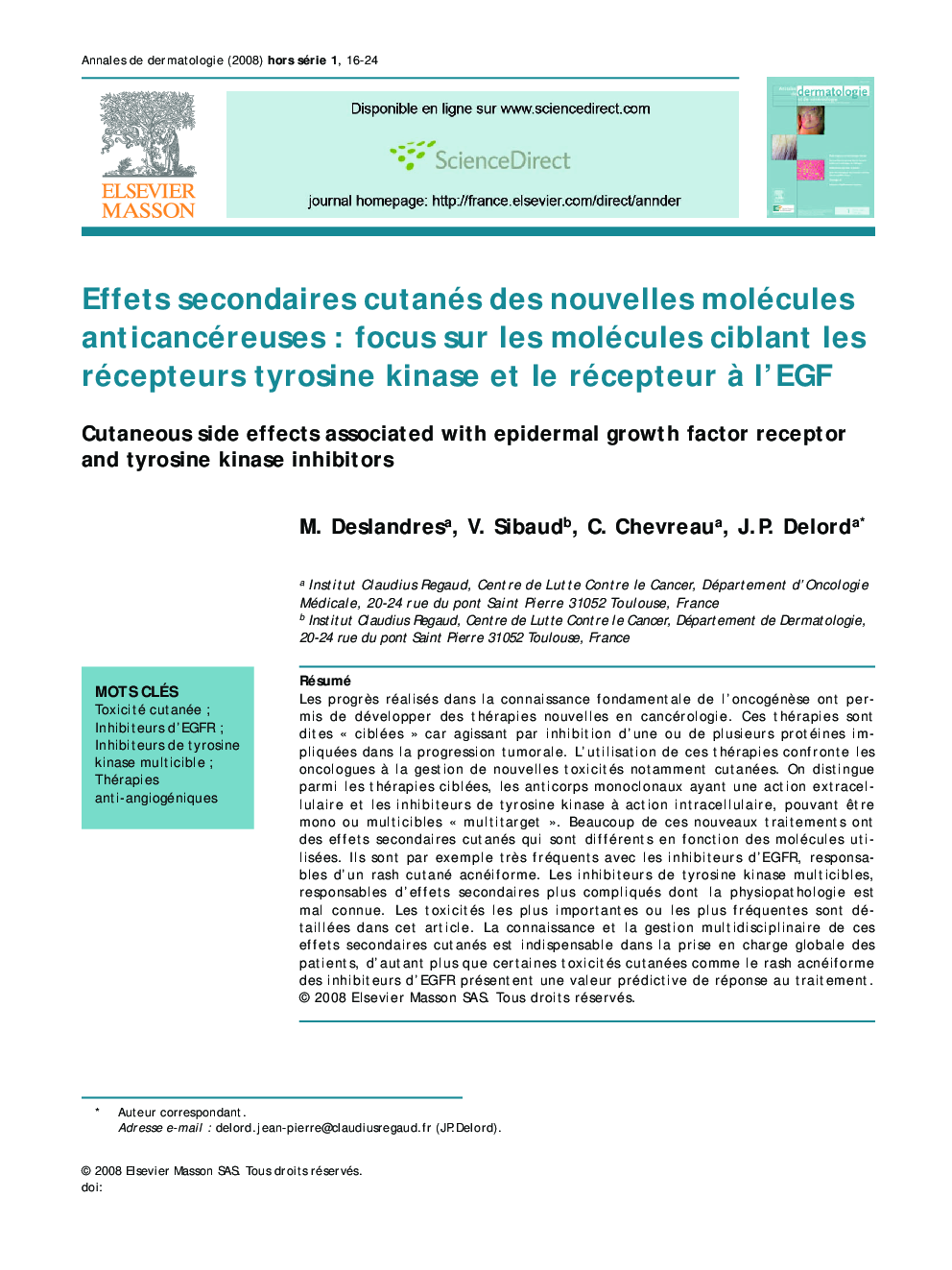| Article ID | Journal | Published Year | Pages | File Type |
|---|---|---|---|---|
| 3189316 | Annales de Dermatologie et de Vénéréologie | 2008 | 9 Pages |
Abstract
Basic knowledge in oncogenesis has dramatically improved in the last decade providing more recently new drugs for cancer treatment. These new targeted compounds usually act by inhibiting tyrosine kinase activity of one or more than one proteins involved in tumor growth and cancer progression. This pharmacological effect is the result of monoclonal or small molecule action. Many of these new compounds have cutaneus secondary effects. Cancer patients are now facing new toxicity, essentially skin toxicity. The cutaneous side effects observed in the patients depend on the drug. For example, EGFR inhibitors induce acneiform rash whereas multitarget tyrosine kinase inhibitors induce different more complex effects which physiopatholgy is not yet completely understood. The secondary effects that are frequently observed are described is this article. A better clinical long term management of these effects is a clear medical need as of these effects could be surrogate markers of drug efficacy.
Related Topics
Health Sciences
Medicine and Dentistry
Dermatology
Authors
M. Deslandres, V. Sibaud, C. Chevreau, J.P. Delord,
